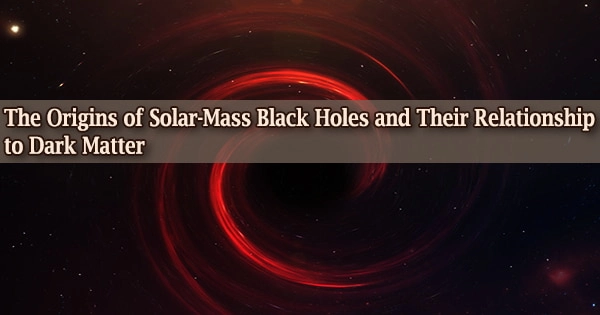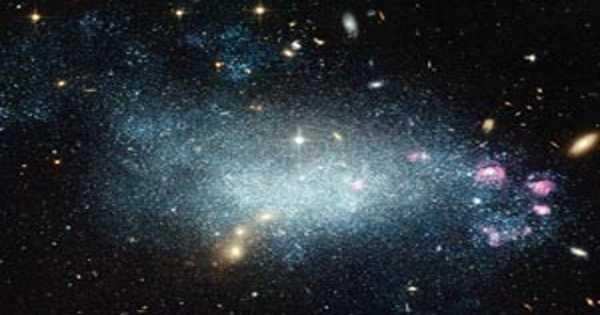The mass of a typical stellar-class black hole is between 3 and 10 solar masses. Most galaxies, including our own Milky Way Galaxy, have supermassive black holes at their centers. They’re incredibly massive, ranging in mass from millions to billions of solar masses.
What is the origin of black holes, and how is this subject related to the formation of dark matter, another mystery? The majority of matter in the Universe is dark matter, but its nature is unknown.
The Laser Interferometer Gravitational-Wave Observatory (LIGO) has found multiple gravitational wave detections of merging black holes in recent years, earning Kip Thorne, Barry Barish, and Rainer Weiss the 2017 physics Nobel Prize.
Because there are so many stars and so much gas and dust, the black hole can swiftly develop in size. Supermassive black holes have a ready-made means to collide and condense into even heavier supermassive black holes because many galaxies collide repeatedly over their long lifespan.
Andrea Ghez, Reinhard Genzel, and Roger Penrose were awarded the 2020 physics Nobel Prize for their unequivocal evidence of the existence of black holes. As a result, understanding the origins of black holes has become a major topic in physics.
Surprisingly, LIGO just discovered a candidate for a 2.6 solar-mass black hole (event GW190814, as reported in Astrophysical Journal Letters 896 (2020) 2, L44). Where does it originate from, assuming it’s a black hole rather than an extraordinarily huge neutron star?
“Transmuted” solar-mass black holes that remain after neutron stars are consumed by dark matter (either tiny primordial black holes or particle dark matter accretion) should match the mass distribution of the original host neutron stars.
According to the findings
The mass of the intermediate mass black hole is thought to be between 100 and 1000 solar masses. Such a massive black hole could never be formed by a single star. The only way such black holes may arise, according to astronomers, is for a single black hole to consume a large amount of matter to reach the needed mass, or for individual black holes to join together.
Solar-mass black holes are especially intriguing because they are not predicted by standard stellar evolution astrophysics. These black holes could form in the early Universe (primordial black holes) or be “transmuted” from neutron stars that already exist.
Long before the stars and galaxies formed, some black holes could have formed in the early cosmos. Dark matter could be made up of some or all of these primordial black holes. When a neutron star captures a primordial black hole, the black hole consumes the neutron star from the inside out, transforming it into a black hole with the mass of the sun.
Regardless of how small the primordial black holes are, this process can yield a population of solar mass black holes. Other types of dark matter can build up inside a neutron star, eventually forcing it to collapse into a black hole of solar mass.
A recent study published in Physical Review Letters proposes a crucial criteria for determining the origin of solar-mass black holes. This work was led by the Kavli Institute for the Physics and Mathematics of the Universe (Kavli IPMU) Fellow Volodymyr Takhistov and the international team included George M. Fuller, Distinguished Professor of Physics and Director of the Center for Astrophysics and Space Science at the University of California, San Diego, as well as Alexander Kusenko, Professor of Physics and Astronomy at the University of California, Los Angeles and a Kavli IPMU Visiting Senior Scientist.
According to the findings, “transmuted” solar-mass black holes that remain after neutron stars are consumed by dark matter (either tiny primordial black holes or particle dark matter accretion) should match the mass distribution of the original host neutron stars.
Because the mass distribution of neutron stars is projected to peak around 1.5 solar masses, heavier solar-mass black holes are unlikely to have formed from dark matter interacting with neutron stars.
This means that events like the LIGO candidate, if they are actually black holes, could be of primordial origin from the early Universe, and so have a significant impact on our understanding of astronomy. This test will be used in future observations to explore and determine the origin of black holes.
The same international team of researchers previously demonstrated that the disruption of neutron stars by small primordial black holes can produce a wide range of observational signatures, which can help us understand long-standing astronomical puzzles like the origin of heavy elements (such as gold and uranium) and the 511 keV gamma-ray excess observed from our Galaxy’s center.
















